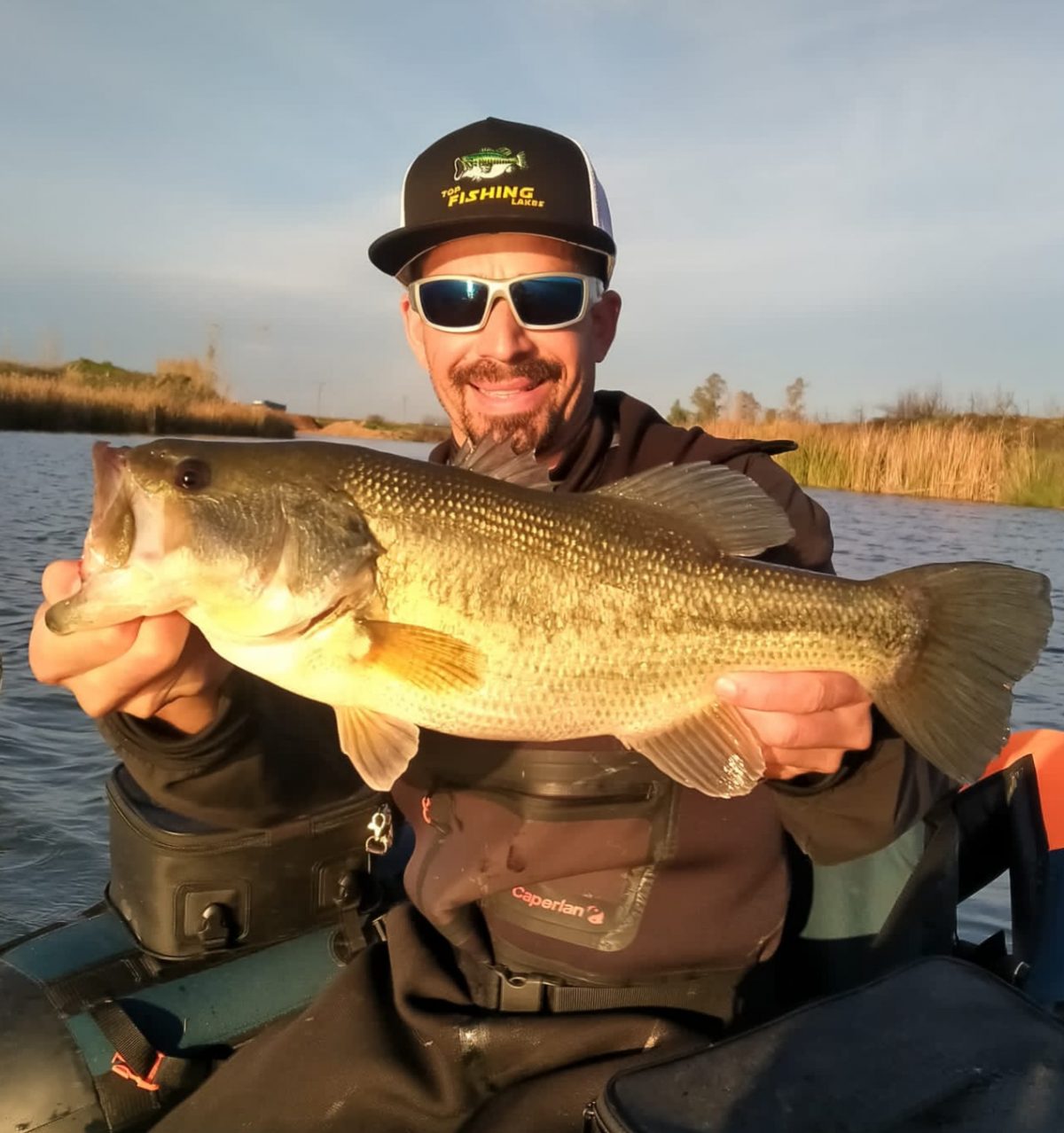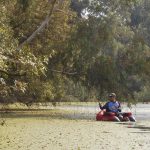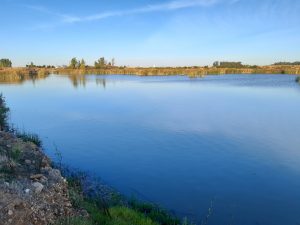
Fishing in gravel pits is a kind of fishing with many peculiarities, enough to dedicate a whole post to it. There are gravel pits all over the Iberian Peninsula, although logically depending on the type of soil there are certain areas where there are more… They are generally found near the course of large rivers such as Guadiana and the extraction of materials is carried out below the water table. Because of this, from its initial construction to its subsequent abandonment, the hole formed by the machines fills with water and never loses it.
But let’s get down to what we are interested in, which is this artificially formed ecosystem, its characteristics and how it influences both the development of fish stocks and the fishing action.
Physical characteristics
Although they can come in many shapes and sizes, generally one gravel pit will have a small surface area, at most a few hectares, and an average depth of between 2 and 4 metres. It is rare to find larger or deeper gravel pits, but it can of course happen.
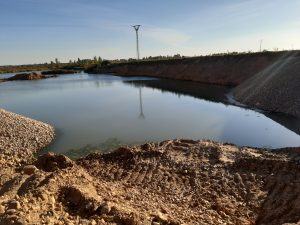
As for the shores, they are usually very steep, caused by the machines used in the extraction of aggregates, which means that we often reach the maximum depth just a few metres from the shore. Even so, the depth is not homogeneous, there are usually areas with different depths, which will influence the fishing action. Often the vegetation itself: rushes, reeds,cattails… will indicate the slope of the shore and the different levels of depth.
Finally, it should be taken into account that there will be areas in which the bottom is composed of mud, sand, silt… And other areas in which there will be gravel of different sizes, or even some larger rocks. It is very important to pay attention to all these details because they will have a great influence on the fishing action.
Vegetation and cover. Fishing in gravel pits.
A newly built gravel pit will be a “desert” of vegetation… but in just a few years, it is amazing to see how different plant species can colonise it.
Trees
Sometimes we can find dry fallen trees, which were left there after the construction of the gravel pit, or which fell down in the following months due to the modifications of the terrain. We may also find trees right at the edge of the gravel pit whose branches may grow into the water and provide shelter for fish.
Even trees that are not in contact with the water can influence the position of the fish (mainly talking about black bass), just because they are located on the shore. Sometimes because of the shade they cast, but sometimes also without shade, their mere presence can attract fish to their vicinity.
Rushes, reeds and cattails
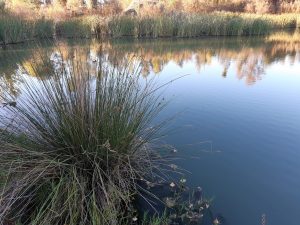
There are quite a number of plant species that can grow on the banks of these ecosystems (and many others as long as water is present). There are several species of each, but broadly speaking, plants of the genus Typha are called cattails, Juncus are called rushes, and reeds are the common name for Phragmites australis.
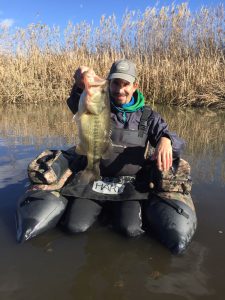
Both cattails and reeds can reach several metres in height, with thick stems and leaves that provide excellent cover. Rushes have cylindrical leaves and are small in size, rarely exceeding one metre in height.
Cattails are generally the plants that will provide the best cover for gravel fishing, as their broad leaves are both in and out of the water. Black bass use them both for resting and hunting, hiding in the shadows. Reeds also provide good shade because of their leaves outside the water. Inside, only their cylindrical stems provide less cover, although this can also be useful.
Algae
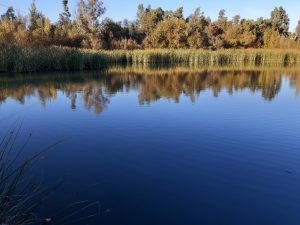
Algae are not usually a particularly abundant species in gravel pits, although in some of them we can find hydrilla algae. These algae spread very quickly and within months can colonise a significant percentage of the gravel pit. They are an excellent refuge for small fish of all species.
Species
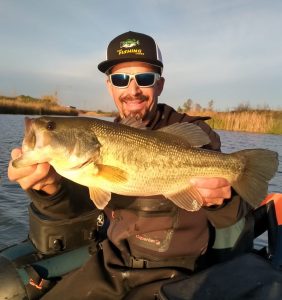
In a gravel pit, black bass will generally be king. This species is incredibly well adapted to these ecosystems, and can reach record sizes if there is enough food. Occasionally pike and zander can also adapt to these ecosystems. Either because they are connected to the river or because someone has introduced them, in general any predatory species adapts well to these ecosystems.
We can also find barbel, carp and other cyprinids such as crucian carp and tench. As for food, of course pumpkinseed, gambusia, crayfish and bleak will be the main species.
Fishing action
In a gravel pit, as in most scenarios, we can fish either open water or cover…. Sometimes there are also intermediate steps on which fish can also be placed.
Open water
If the gravel pit is free of algae we can fish with crankbait, jerkbait, chatterbait, spinnerbait or vinyl shads perfectly. For this type of fishing it is very important to know the bottom of the gravel pit, the rocks, the depth changes… The fish will almost never be in the middle of nowhere, they will be associated with one of these elements. This type of fishing can be very effective at certain times, although I don’t enjoy it the most.
Cover
If we choose to fish the bank, we will be fishing the cover. The fish may be right on the edge, wandering around or just waiting for some prey ahead… In this case, catching them will be “relatively” simple, as it will not require great casting skills and we will simply have to find the right lure.
The second and more frequent option is that the fish are inside the cover, tucked or very deep in it. If we are in this second case, we will have to use oversized equipment in order to have good results. Heavy or extra heavy rods with strong braids will be our only option to get the fish out of the cover once they bite.
Techniques
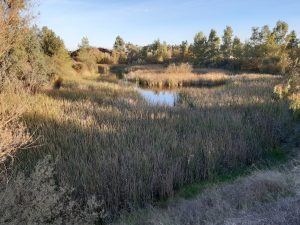
The main techniques will be flipping or pitching with either jigs, fleas or texas. If we use texas or fleas, it is highly recommended to fix the lead so that it does not run along the line, because if we don’t do it many times the vinyl will not penetrate the cover. As for the weight, the minimum weight is half an ounce, and from that point on, whatever we consider necessary to get our lure where we want it to go. We can also use hollow frogs, but for this we must have some skill in casting, as it is essential that the frogs penetrate into the cover as much as possible.
If the fish are tucked in the cover but not too “in”, it is easier. We will not have to use such robust equipment and we will be able to use more moderate weights. In this second case, we can also use vinyl frogs if we see that we miss a lot of bites with the hollow ones.
Latest tips for fishing in gravel pits
The best way to fish these scenarios is to fish from a float tube. It is really difficult to fish from the shore as it is generally impossible due to the steepness of the shore or the vegetation layer. However, bear in mind the restrictions of your community in this respect.
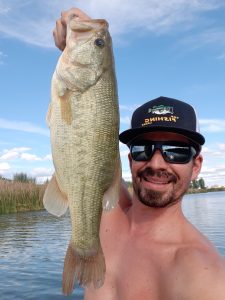
Another very important detail for fishing in gravel pits is the time of day. There will be days that will bite better at dusk, others at dawn, others at midday, others when the air rises…. The fish are there (they can’t go anywhere) and a significant percentage of our casts are going to get the lure past the fish. Many times we’ll get desperate changing lures and then suddenly “turn on a button” and the fish start biting, no matter what we put on.
As always, spend many hours in the water and if we can visit them frequently, we will be able to understand them much better. Finally, if you accept my advice, try not to “burn them”. They are small stages and if we give them too much fishing several days in a row, the only thing we will achieve will be to make the fish resabiate and stop them biting. I am lucky enough to live in an area with a good number of gravel pits at a reasonable distance, and I hardly ever go to the same one 2 days in a row for this reason.

